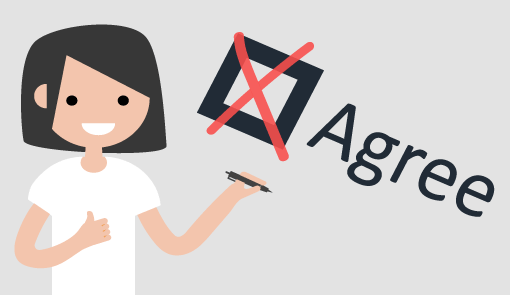We identify ten ways to increase a customer’s value to your company, through improving both sales through service and retention rates.
1. Look for “Bonus Points” During the Conversation
During contact centre conversations, customers will give you clues as to what matters most to them.
A well-trained advisor will be able to use these nuggets of information – which we call “bonus points” – and link them to their organization’s product range, to subtly promote a higher-value offering.
Picking up on things like what the customer’s partner is called can be really useful, even if it doesn’t seem strategically important at the time.
Anthony Stears, founder of The Telephone Assassin, says: “Bonus points allow you to tailor your pitch, enabling you to gain a better understanding of the customer as an individual person, so you can develop a stronger relationship with them.”
“For example, picking up on things like what the customer’s partner is called can be really useful, even if it doesn’t seem strategically important at the time.”
After the interaction, these bonus points can still prove useful if the advisor adds them into the “free comment” section that comes with most modern CRM systems.
Doing this means that future advisors that interact with the customer will have a better idea of their preferences, enabling them to provide better service and increasing the chance of future sales.
2. Get Your Customers to Laugh
One contact centre made a great improvement to their sales through service results by training advisors to make customers laugh, in appropriate situations.
This started with thorough training – to avoid advisors telling inappropriate jokes or trying to be funny at the wrong times – and refresher advisor–team leader conversations.
Anthony, who worked as a consultant with this company, says: “To avoid advisors getting into a cycle of thinking ‘this is just another call’, it’s great for team leaders to have off-the-cuff conversations with their advisors every now and then.”
“This chat is designed to remind advisors of the human element of the call and to avoid them approaching the call as if it is just another task that they have to do.”

If you can just get a little snigger out of the customer, you know they are listening and that you are on the same wavelength.
“With this human element we can better achieve objectives, like trying to get the customer to laugh, and if you can just get a little snigger out of the customer, you know they are listening and that you are on the same wavelength.”
Another similar technique that some contact centres try to adopt, in order to better build rapport with customers, is to ask probing questions that will likely result in the customer saying “yes”.
While this might seem small, by saying “yes” the customer is agreeing with you, which can be a powerful psychological tool, especially if you want to sell to them as well.
3. Offer “Test Drives” and Share Customer Testimonials
Every business needs a test drive, i.e. a way to demonstrate the product/service’s value without asking for a commitment from the prospective customer.
However, in terms of what you can do from the contact centre, the best way to perfect your pitch is to share success stories that people can relate to.
Anthony says: “If you can gather those bonus points, as we previously discussed, and you notice that you have an offering that suits the customer’s preferences, get them talking about the preference first and not what you’re trying to sell.”
If you can gather those bonus points… and you notice that you have an offering that suits the customer’s preferences, get them talking about the preference first and not what you’re trying to sell.
“Then, bond over those preferences and share a testimonial of a customer who also shares that preference, for your preferred option.”
These customer testimonials can also be very useful to gather before making outbound sales calls, as you can profile the customer beforehand and pick out a couple of testimonials that will likely be relevant to them.
By profiling the customer you can also do things like find their social media profiles, discover which football team they support and call them soon after their team wins – to ensure you contact them at the best possible moment (i.e. when they’re likely to be in a good mood).
4. Use Customer Churn Calculations to Identify Your Most Valuable Customers
Contact centres often split customer churn calculations into different product groups, in order to gain an understanding of where customers are most often retained and lost.
Once we know this, we can find out the products and services that generate the highest lifetime value and better promote these products – to increase overall customer value.
However we can also use this information to highlight our most valuable customers, which can be very helpful in terms of retaining value, if we clearly signpost to the advisor when they receive a call from a high-profile customer.
But how can we do this?

Frédéric Durand
Frédéric Durand, CEO of Diabolocom, says: “When the customer’s contact is routed through to the agent, the agent should see all of that customer’s information pop up on their screen, in a nicely structured way.”
“This information will hopefully include the customer’s buying history and their known preferences, which will enable the advisor to gauge their value and have a more personalized conversation.”
As well as being a great asset to advisors, information regarding which products and services have the highest churn rates will help to provide insight as to which journeys first need to be addressed when looking to improve the customer experience.
For more on improving customer journeys, read our article: How to Reduce Friction and Add Rewards to the Customer Experience
5. Find Out Why Customers Down-Value
Alongside your calculations for customer churn rates across different products, it can also be good practice to find out the churn rate for down-valued customers.
These calculations will enable you to quantify the severity of the problem your organization has in terms of value lost and, if it is a significant problem, find out why.
Anthony says: “If you know that down-valuing is a big problem, engage with the customers and find out why they didn’t see the value in the upgraded product. We also need to ask ourselves if we could have helped them to see the value.”
If you know that down-valuing is a big problem, engage with the customers and find out why they didn’t see the value in the upgraded product. We also need to ask ourselves if we could have helped them to see the value.
“Focus groups are always good for this, as you can really hear when there is a group consensus or when somebody speaks very passionately about an issue.”
Also, by treating your down-valued customers kindly and re-engaging them with the product of higher value, there is a chance that you can motivate them to upgrade their package once again – or at least secure their continued business.
6. Strategize How to Follow Up on Lost Calls
Lost calls are inbound contacts that do not result in the caller being put through to an advisor. So they are a combination of mostly abandoned and missed calls – with an very occasional dropped call – which are caused by technical errors.
While we would expect 2-5% of calls to abandon, if our queue times are exceedingly long… we have potentially caused a great deal of dissatisfaction.
So, let’s disregard dropped calls for the moment and focus on abandons and missed calls. If we ignore these, we miss the opportunity to attract new customers and better interact with our existing customers.
While we would expect 2-5% of calls to abandon, if our queue times are exceedingly long – due to an unexpected peak in contact volumes – and a high percentage of contacts abandon, we have potentially caused a great deal of dissatisfaction.
A missed call is usually the result of similar circumstances, as the incoming call reaches the maximum threshold for waiting time set by the ACD system.
Lost calls that are the consequence of both of these instances have the potential to cause a loss of customer value, so we need to create a strategy that deals with both.

Mercedes Barbuti
Mercedes Barbuti, Sales Director UK & Ireland at Diabolocom, suggests: “With Caller IDs, you can identify the telephone numbers that have abandoned or been missed entirely and load them back into your outbound dialler, making it easy to call these customers back.”
“The calls are then added to an advisor’s dashboard and reminders set up, which can be monitored, so you are systematically engaging with customers and catching up on lost value.”
An option to select to leave a message before hanging up can often prove useful too.
While you may not wish to do so with every abandoned call, as some may be wrong numbers, you can set an abandoned threshold to ensure you’re calling back in the more “extreme” cases.
7. Gain Permission to Call the Customer Back
The more engaged the customer is with our organization the more business they will do with us. However, does sending them multiple promotional emails, which will over time end up in their spam folder, really count as engagement?
Probably not. But creating touchpoints where you systematically engage the customer in conversations is a much better way to secure loyalty. The problem is in doing this smoothly.
As Anthony says: “The more contact that you have with people, the better relationship you are going to have, and there are opportunities in every conversation that we have with people.”

The more contact that you have with people, the better relationship you are going to have, and there are opportunities in every conversation that we have with people.
“So what you can first do is gain permission to give the customer a callback in a week’s time and make sure that they are happy with their purchase. In this follow-up call you can also ask the customer for a testimonial and ask if there is anything else you can help with – which could lead to further business.”
“For an organization where you have annual subscriptions or contracts, what you could also do is phone them periodically every quarter. This means that you are regularly checking that they are satisfied and it also gives you the opportunity to update them with case studies and testimonials that are relevant, which can drive value and ensure retention.”
The important thing in both of Anthony’s examples is that we are asking for the customer’s permission to follow up in the original call. This means the customer will be much more receptive to the call than if it catches them by surprise.
Another similar tactic is to push customers onto the phone channel once they are in the final month of their contract. This is to engage them in human conversation that is more likely to secure their continued business.
For similar tips for improving customer retention, read our article: 5 Ways to Retain Advisors Using the Same Tools as Customer Retention
8. Group Listen to Successful Sales Through Service Calls
When trying to help advisors meet any sort of goal, it’s important to show them what “good” looks like, as it helps to build advisor confidence and share best practice.
Improving sales through service is no different, as we listen out for key trends in how our high-performers operate and share those as key learnings in a group listening training exercise.

Anthony Stears
Anthony adds: “We should be listening to our high-performers’ calls and finding out what bonus points they are scoring and how they’re using them, and share those as best practice.”
“Also, for the advisors that are below target, we should then just work out if they are scoring any bonus points at all, because sometimes they are so fixated on the process that the natural conversation just seems to disappear – it becomes regimented.”
When this happens, the advisors can turn into a subservient account manager, as opposed to somebody who is working on the customer’s behalf and trying to help them to buy.
With this in mind, it can also be good practice to share examples of when sales through service has gone wrong in group listening, to show advisors what bad looks like and to teach them how these situations can be avoided.
9. Route Certain Customers to Specialist Advisors
Perhaps you have customers who have purchased a product or service which has a high churn rate or those who have a history of purchasing over the phone. These are examples of key customer types that you want to focus your service strategy around.
If you can highlight these customers in your ACD system, so that it recognizes each customer’s Caller ID, you can pass these customers – who carry significant buying potential – straight through to advisors who specialize in sales through service.
But how can you identify the advisors who can have the potential to do this best?
With skills based routing, you can use technology to determine whether any specific skills are required to handle the incoming contact.
Frédéric says: “Your data and feedback from team leaders should be telling you where your agents’ primary skills lie.”
“Then, with skills-based routing, you can use technology to determine whether any specific skills are required to handle the incoming contact.”
“With this ability, you can pair advisors with the contacts which require their primary skills. This will not only lead to better rapport building, but you can use different strategies to meet a number of wider organizational goals.”
In the case of this article, the goal is to improve sales through service and retention, but you can also employ other routing strategies to improve other aspects of your customer service.
To find out more examples of routing strategies that you can employ, read our article: The Top 10 Call Routing Strategies
10. Coach Advisors to Understand the Customer’s Emotional Journey
According to Anthony, the key to creating value is to help people to understand the emotional journey people go through when they decide to buy.
This journey revolves around three key areas, each of which we have touched upon in this article.
- Building rapport so they like you and listen to you – usually good manners is enough
- Establishing your credibility by sharing success stories they can relate to – case studies/testimonials….
- Creating urgency – using a “test-drive” or special offer to entice them to take action.
In fact, educating advisors on customer emotions and coaching them to provide service that is designed to evoke a specific emotion which is proven to drive value can be a great strategy.

Colin Shaw
In the article “7 Steps to Evoke the Emotions You Want From Your Customers“, Colin Shaw states: “An advisor’s job should be to move the customer away from what they are feeling when they contact you and towards a desired emotion.”
Not only does this strategy highlight the growing trend of measuring customer emotions from within the contact centre, but it also underlines our responsibility to keep advisors motivated to trigger the right emotions and drive value.
For more articles on increasing customer engagement, read our articles:
- How to Develop Sales Focus in a Customer Service Team
- 11 Customer Retention Strategies
- 5 Customer Engagement Strategies That You Cannot Ignore
Author: Robyn Coppell
Published On: 17th Jul 2019 - Last modified: 13th Sep 2024
Read more about - Customer Service Strategy, Anthony Stears, Customer Management, Customer Service, Editor's Picks, Emotion, Retention









































